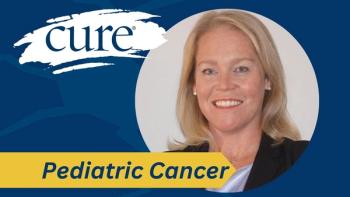
Immunotherapy Combination Sparks a Response in Melanoma Brain Metastases
Key Takeaways
- Nivolumab and ipilimumab combination showed a 46% intracranial response rate in untreated melanoma brain metastases, with higher efficacy when used as initial therapy.
- The ABC trial included 76 patients across three cohorts, with cohort A receiving the combination therapy showing the highest response rates.
The combination of the immunotherapies Opdivo (nivolumab) and Yervoy (ipilimumab) sparked a response in nearly half of asymptomatic patients with melanoma brain metastases who had not received prior local therapy to the brain.
The combination of the immunotherapies Opdivo (nivolumab) and Yervoy (ipilimumab) sparked a response in nearly half of asymptomatic patients with melanoma brain metastases who had not received prior local therapy to the brain, according to the updated findings of the phase 2 ABC trial presented at the 2017 World Congress of Melanoma in Brisbane, Australia.
The study’s main aim was to measure the responses that occurred within the skulls of these patients. This is known as the intracranial response (ICR) rate, which reached 46 percent.
The drugs that were combined in the study are in a family of immunotherapy drugs called checkpoint inhibitors, which are approved to treat a range of cancer types. These drugs target and disable proteins in the body that normally keep the immune system from going into overdrive. This takes the brakes off the immune system so it will be more likely to recognize and fight cancer. Opdivo targets the protein PD-1. Yervoy targets the protein CTLA-4.
“Nivolumab combined with ipilimumab, or nivolumab alone, have activity in active, asymptomatic melanoma brain metastases without prior local therapy. Activity is higher when nivolumab and ipilimumab are given up front,” meaning that they are the first regimen administered to treat brain metastases, said Alexander Menzies, M.D., of the University of Sydney.
The ABC trial enrolled 76 patients whose active melanoma brain metastases included at least one brain lesion greater than or equal to 5 mm but less than 40 mm. Additionally, patients had to have an ECOG performance status of 0 to 2, meaning that they well enough to independently carry out most activities of daily life. Patients who had previously taken immunotherapies that targeted PD-1, PD-L1 or CTLA-4 were excluded from the trial, as were those who had serious autoimmune disease. Those who had previously taken drugs that targeted mutations to the BRAF or MEK genes were eligible to participate.
There were three arms in the study. The first cohort (A) included 35 patients who received Opdivo plus Yervoy every three weeks for four cycles, followed by Opdivo monotherapy every two weeks. The second cohort (B) included 25 patients randomized to Opdivo at a standard approved schedule. The third exploratory cohort of patients (C) included 16 who had undergone previous local treatment to the brain, or who had leptomeningeal disease, meaning that metastases had reached the innermost layers of tissue covering the brain. These patients were treated with Opdivo and could also receive the steroid prednisone.
The primary endpoint of the study was ICR. Secondary endpoints included extracranial response rate (ERR), meaning response outside the skull; overall response rate; progression-free survival (PFS); overall survival; and safety. All data had been collected as of August 28, 2017. Patients were followed for a median 17 months.
Cohort A experienced a 46 percent ICR rate, including a complete response (CR) rate of 17 percent. Cohort B had an ICR rate of 20 percent, including a CR rate of 12 percent. The ICR rate in cohort C was 6 percent. The median duration of response had not yet been established at the time the results were reported. The ERR was 57 percent in cohort A, 29 percent in cohort B and 29 percent in cohort C.
The median intracranial PFS rate had not yet been reached at the time results were announced. The six-month intracranial PFS rate was 53 percent for cohort A and 20 percent for cohort B. The median extracranial PFS was 13.8 months for cohort A, 2.6 months for cohort B and 2.6 months for cohort C, with six-month PFS rates of 51 percent, 35 percent and 19 percent, respectively. The median OS had not been reached. The six-month OS rate was 78 percent in cohort A, 68 percent for cohort B and 44 percent in cohort C.
Treatment-related side effects were experienced by 94 percent of patients in cohort A, 68 percent in cohort B and 50 percent in cohort C. Treatment-related serious or severe side effects were experienced by 43 percent of patients in cohort A, 20 percent of those in cohort B and 6 percent of those in cohort C. Discontinuations of trial treatment due to side effects occurred in 9 percent, 4 percent and 0 percent of patients in cohorts A, B and C, respectively. There were no new or unexpected toxicities compared with prior tests of the drugs, according to Menzies.
“Nivolumab combined with ipilimumab has high activity in melanoma brain metastases and may be considered for upfront therapy in such patients,” Menzies concluded. “A clinical trial adding radiotherapy for those who progressed early on with nivolumab and ipilimumab is planned.”




